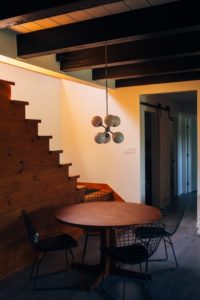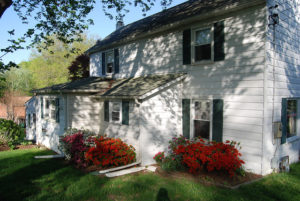How Do Waterproofing Inspections Work?

Waterproofing and drainage problems are not always easy to spot. When these issues are small, they can be almost imperceptible; it isn’t until they become large that the average homeowner notices – think flooded basements, water spots on walls, and damaged items.
A professional, visual inspection can detect these problems before they cause extensive (and expensive) damage. Waterproofing inspections can identify any signs of poor drainage and foundation damage. Here’s how they work!
What Makes A Good Waterproofing Inspection?
No matter what area they’re looking at, home inspections should be unbiased, visual reports of the structures, components, and systems that make up a home. For waterproofing, this means looking at the interior and exterior of the home’s basement and foundation. A building inspector or waterproofing specialist who is qualified to spot problems and recommend solutions must perform this inspection because waterproofing failures are not always easy to spot!
In many cases, waterproofing issues are small problems that are masking a larger issue. These are often overlooked and undetected by nonprofessionals. Catching these defects too late can result in complicated and invasive repair.
Interior Inspection
Your basement is the start of many waterproofing inspections. Whether finished or unfinished, we can detect many problems first on the inside. These signs include:
- Water in the crawl space

- Excess humidity
- Cracked or buckling walls
- Moisture around doors and windows
- Blistering, peeling, or bubbling paint
- Mould and mildew growth
- Stains on the concrete floors and walls
- Rotting wood
To detect what may still be hidden behind your basement walls, we will also go around the inside with a moisture detector. This tool helps us find any moisture build-up behind the drywall of a finished basement.
Exterior Inspection
Professional inspectors will also carefully examine the exterior of your home, giving extra focus on common points of weakness. These include:
- The voids and mortar joints in block and brick walls can let water enter the cervices of your walls.
- The grading of the property around your foundation. If it slopes
- Basement window wells. Water can build up and filter down around basement windows, and this moisture can deteriorate and seep through seals.
- Joints are the junctions between your wall and footing, basement floor, and foundation, as well as new extensions on the home.
- Where the foundation meets the brick. If the sill is not sealed properly, or if the original seal has deteriorated, water can easily leak into your basement.
 If you’re considering the purchase of a home or building, consider bringing in a waterproofing specialist before settling on your offer, even if you don’t suspect any waterproofing issues. An inspection should either turn up water problems that you can rectify before moving in or give you peace of mind knowing your property is in good shape. Ashworth Drainage can perform this inspection, identifying the areas you can improve before they become major expenditures!
If you’re considering the purchase of a home or building, consider bringing in a waterproofing specialist before settling on your offer, even if you don’t suspect any waterproofing issues. An inspection should either turn up water problems that you can rectify before moving in or give you peace of mind knowing your property is in good shape. Ashworth Drainage can perform this inspection, identifying the areas you can improve before they become major expenditures!
